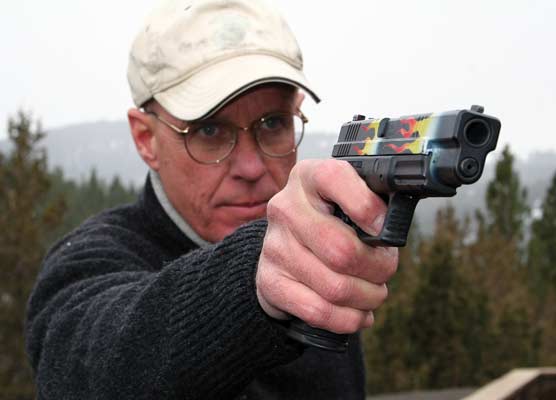Environmental Effects
Often lost in the argument of techniques are a few issues that might be interesting to consider. No matter what technique one used today, it probably won’t be the one used 10 years from now. With bifocal or trifocal glasses thrown into the mix, what and how we see changes as we gain seniority. The fact that many confrontations take place in no, low or altered light conditions may affect downrange results.
Throw in a white light for assistance in target identification of what is being looked at and light flaring and glaring as the beam bounces off walls and ceilings, which often doesn’t produce a visual happy meal. On top of all these issues, most fights have moving threats, and in many cases the shooter is moving as well to get cover or to get better target acquisition. All these things mentioned occurring in combination increase the potential of missing the target.
Mr. Cooper in his assemblage of the Modern Technique of pistol craft attached the name of “flash sight picture” as part two of the five-part technique. The misunderstanding of what the Modern Technique flash sight picture is in application is the basis for many aimed fire vs. un-aimed fire arguments. The Modern Technique flash sight picture is not intended to be, nor is it, a Camp Perry bull’s-eye perfect example of sight alignment and sight picture. In principle, this is the best — not necessarily perfect — sight picture you can get in an expedited manner. It was also to be used at relatively short ranges — say, five to 15 yards — or longer, depending on the always easily forgotten practice.
Read the full article here

